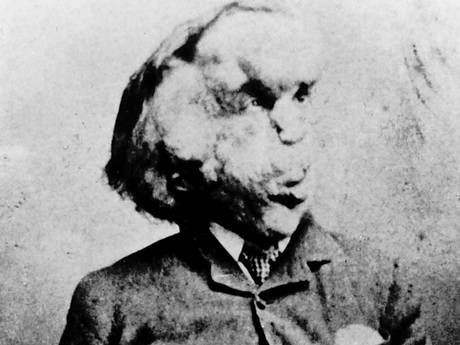Deconstructing The Elephant Man: Mysteries Of Joseph Merrick's Deformities May Soon Be Unlocked

Joseph Merrick – or, the Elephant Man – has persisted in pop culture and medical inquiry since the Victorian Era. For more than a century, the genetic underpinnings of his fascinating physical deformities have remained a mystery, despite numerous studies and preservation efforts. Now, scientists are turning to DNA sampling to settle the matter once and for all.
Researchers at Queen Mary University of London believe that the secret to Merrick’s disorder may hide in his bones. As the custodian of Merrick’s remains, the university keeps the famous skeleton in a small museum in Royal London Hospital, where he died in 1890. However, damage from arduous preservation processes may problematize the extraction of a viable DNA sample.
“The skeleton, which is well over a hundred years old now, is actually very clean," said Richard Trembath, speaking to BBC. Trembath is the university’s vice-principal of health, and a Senior Investigator for the National Institute of Health Research.
“This represents a significant problem. On a number of occasions over the years the skeleton has been bleached during the preservation process,” he explained. “Bleach is not a good chemical to expose DNA to. It gives us an added problem in trying to extract sufficient quantities of DNA in order to undertake sequencing."
Joseph Merrick: A 100-Year-Old Mystery
Numerous possible causes of Merrick’s deformities have been implicated in medical literature. A prominent example is neurofibromatosis type 1 – a genetic disorder that causes extensive tumor growth along nerves in the brain, skin, and other parts of the body. Another potential culprit is Proteus Syndrome, which causes overgrowth of bones and tissue. Both conditions would help explain the abnormalities in Merrick’s bone and tissue structure.
The current research effort is led by Michael Simpson, Head of the Genomic Medicine Group at King’s College London. While the geneticists have been successful in extracting a sample, they are still working to “clean” the badly damaged DNA. The remaining obstacles notwithstanding, Simpson believes that they will soon have a shot at sequencing Merrick’s genome and determine the origin of his symptoms.
"There will be some challenges," he said. "But with some further optimization I am confident that we will be successful. We should have a good chance of sequencing his genome."
Joseph Merrick was born in Leicester, England in 1862. He spent most of his adult life as a patient at London Hospital, where his friend Frederick Treves worked as a surgeon. Over the course of his brief life, he was an object of both ridicule and fascination. A few months before his 28th birthday, he died from a dislocated neck, likely as a result of his head’s abnormal mass.



























